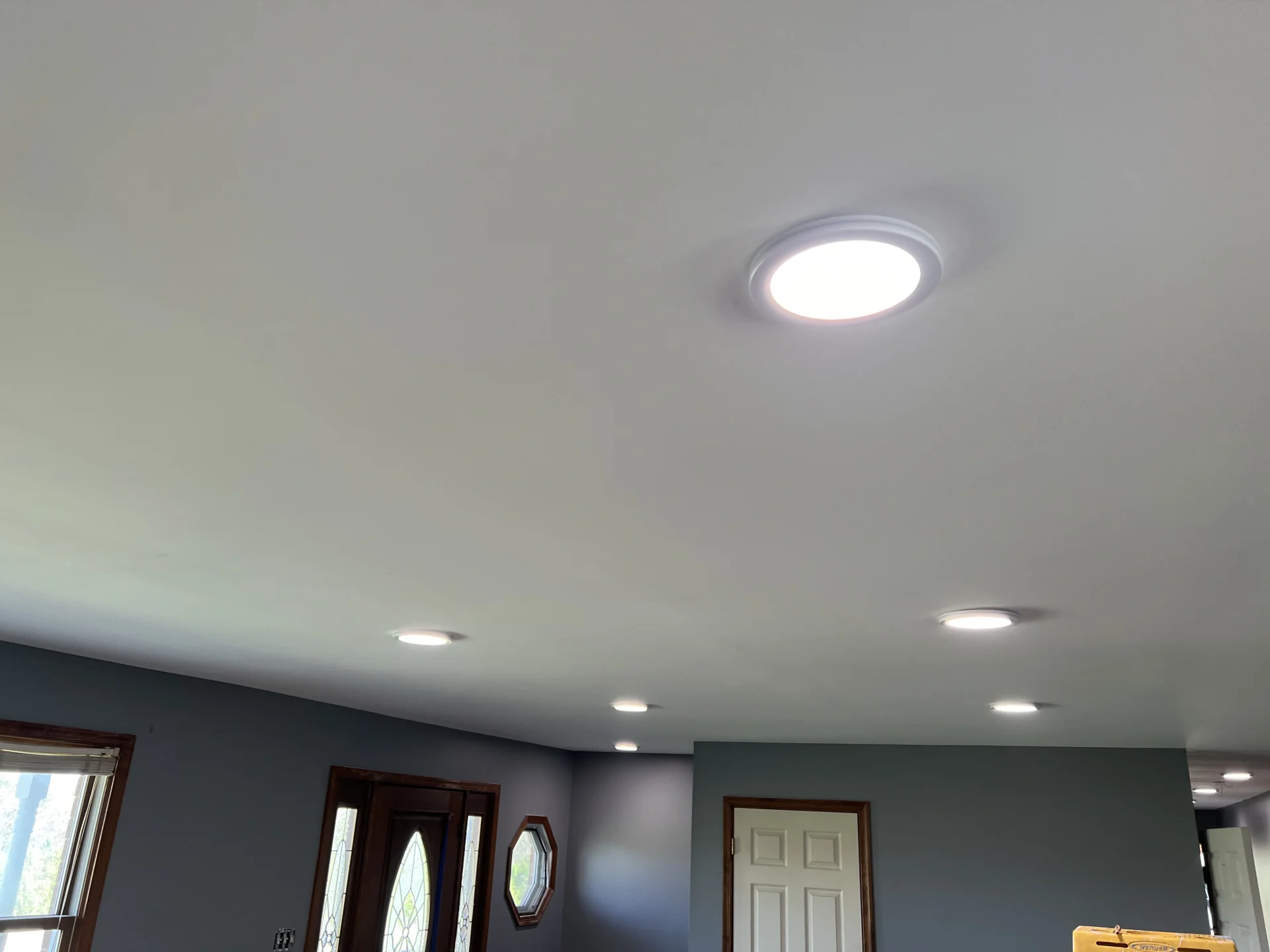Whether you’re renovating your home, upgrading your lighting fixtures, or simply looking to improve energy efficiency and ambiance, understanding the benefits and options of LED lighting is essential.
In this guide, we’ll illuminate the path to choosing the perfect LED indoor lighting solutions for your needs, from understanding the technology to selecting the right fixtures and installation tips. Let’s shed some light on the world of LED lighting together!
Understanding LED Lighting Technology
LED, or Light-Emitting Diode, lighting is a highly energy-efficient and versatile solution that has revolutionized the industry. Unlike traditional incandescent and fluorescent bulbs, electronic light-emitting diode (LED) lights generate light by use of the flow of electrons within a semiconductor substance resulting in minimal heat generation and maximum energy conversion. Understanding the key features and benefits of LED lighting is crucial for making informed purchasing decisions.
Key Features of LED Lighting
- Energy Efficiency: LED lights have a much lower energy consumption compared to traditional lighting sources, lowering electricity bills and reducing environmental impact.
- Longevity: LED lights have an impressive lifespan of 25,000 to 50,000 hours or more, outlasting traditional bulbs several times and minimizing the need for frequent replacements.
- Durability: In addition to being extremely long-lasting, LED lights are also resistant to vibration and stress temperature fluctuations, making them ideal for use in various indoor environments.
- Instantaneous Lighting: On the other hand, LED lights give instant illumination, in contrast to fluorescent lights, which may flicker or take some time to attain all of their brilliance with no warm-up period.
- Design Flexibility: LED technology allows for various shapes, sizes, colors, and brightness levels, enabling customizable lighting solutions to suit any space or aesthetic preference.
Types of LED Indoor Lighting Fixtures
LED lighting fixtures come in a variety of styles and designs to accommodate different indoor lighting needs and preferences:
- LED Recessed Lighting: Also known as can lights or downlights, recessed LED fixtures are installed flush with the ceiling to provide discreet and directional lighting in kitchens, bathrooms, hallways, and living areas.
- LED Ceiling Lights: Surface-mounted LED ceiling lights offer a lighting system that is both contemporary and sleek, designed for general illumination in bedrooms, offices, dining rooms, and other living spaces.
- LED Pendant Lights: Suspended from the ceiling by a rod, chain, or cord, LED pendant lights add visual interest and task lighting to kitchen islands, dining tables, and entryways.
- LED Track Lighting: Featuring adjustable heads mounted on a track, LED track lighting allows for customizable and directional lighting in art galleries, retail spaces, and home offices.
- LED Under-Cabinet Lighting: Installed beneath kitchen cabinets or shelving, LED under-cabinet lights provide task lighting and accent illumination for food preparation, cooking, and ambiance.
Benefits of LED Indoor Lighting
Investing in LED indoor lighting offers numerous benefits for homeowners and businesses alike:
- Energy Savings: LED lights consume up to 80% less energy than traditional bulbs, resulting in significant long-term cost savings on electricity bills.
- Longevity: LED lights last much longer than traditional bulbs, reducing the frequency of replacements and maintenance costs.
- Improved Ambiance: LED lights offer superior color rendering and temperature control, allowing for customizable lighting effects to enhance mood, productivity, and comfort.
- Environmental Sustainability: LED lights are mercury-free and produce less greenhouse gas emissions than traditional lighting sources, making them more eco-friendly.
- Enhanced Safety: LED lights generate minimal heat and emit little to no UV radiation, reducing the risk of fire hazards and damage to sensitive materials and furnishings.
Choosing the Right LED Lighting
Choosing the proper LED lighting involves considering various factors to meet your needs and preferences. Here are some key considerations to help you select the best LED lighting for your home, business, or project:
- Lighting Type: Determine the type of LED lighting you need based on the intended application and lighting requirements. Common types of LED lighting include:
- Bulbs: LED bulbs are direct replacements for traditional incandescent, CFL, or halogen bulbs and are available in various shapes, sizes, and brightness levels.
- Fixtures: LED fixtures include recessed lights, track lights, pendant lights, ceiling lights, wall sconces, and outdoor lighting fixtures designed specifically for LED bulbs or integrated LED modules.
- Strips: LED light strips or tape lights are flexible, adhesive-backed strips containing multiple LEDs and are ideal for accent lighting, under-cabinet lighting, or decorative applications.
- Brightness and Color Temperature: Consider the LED lighting’s desired brightness and color temperature. Brightness is measured in lumens, with higher lumen values indicating brighter light output. Color temperature is measured in Kelvin (K), which determines the warmth or coolness of the light. Choose a brightness level and color temperature that suits the space’s specific lighting needs and ambiance.
- Energy Efficiency: LED lighting is highly energy-efficient, consuming significantly less energy than traditional lighting technologies. Look for LED products with ENERGY STAR certification or high Energy Efficiency Ratings (EER) to maximize energy savings and minimize electricity costs.
- Dimmability: Determine whether dimmable LED lighting is needed for the space. Dimmable LED bulbs and fixtures allow you to adjust the light intensity to create different moods, enhance ambiance, or save energy when full brightness is not required. Select compatible dimmer switches and LED products designed for dimming functionality.
- Color Rendering Index (CRI): CRI measures how accurately a light source renders colors compared to natural sunlight. Higher CRI values indicate better color rendering. Choose LED lighting with a high CRI, especially for spaces where color accuracy is essential, such as kitchens, bathrooms, retail stores, and art galleries.
- Longevity and Warranty: LED lighting typically has a longer lifespan than traditional lighting technologies, with many LED products rated for tens of thousands of hours of use. Look for LED products with warranties that cover both the product and its performance over time to ensure reliability and peace of mind.
- Compatibility and Controls: If applicable, consider compatibility with existing lighting controls, smart home systems, or lighting management systems. Some LED products are compatible with wireless dimming systems, motion sensors, timers, or smartphone apps for remote control and lighting setting automation.
- Aesthetic Design and Style: LED lighting has various designs, styles, and finishes to complement interior or exterior aesthetics. Choose LED fixtures or bulbs that match the décor, architecture, and design preferences of the space for a cohesive and visually pleasing lighting scheme.
By taking into account these aspects and analyzing your own situation, lighting needs, you can select the right LED lighting solutions to create the desired ambiance, enhance energy efficiency, and improve overall lighting quality in your home or business.
Installation and Maintenance Tips
While LED lighting installation is generally straightforward, following these tips can ensure optimal performance and longevity:
- Follow Manufacturer Instructions: Always follow the manufacturer’s installation guidelines and recommendations to ensure proper wiring, mounting, and operation of LED fixtures.
- Hire a Professional: For complex installations or retrofit projects, consider hiring a licensed electrician to ensure safety, code compliance, and proper integration with existing electrical systems.
- Regular Cleaning: Periodically clean LED fixtures and lenses with a soft, dry cloth to remove dust, dirt, and debris that may accumulate and diminish light output.
- Monitor Performance: Watch LED fixtures for any signs of dimming, flickering, or color shifting, which may indicate a potential issue or malfunction that requires attention.
- Schedule Routine Maintenance: Schedule annual or biannual maintenance checks by a qualified electrician to inspect LED fixtures, wiring, and connections for signs of wear, damage, or deterioration and address any issues promptly.
If you’re ready to upgrade your indoor lighting or have any questions, don’t hesitate to contact our team of experts. Let’s brighten up your space together!



